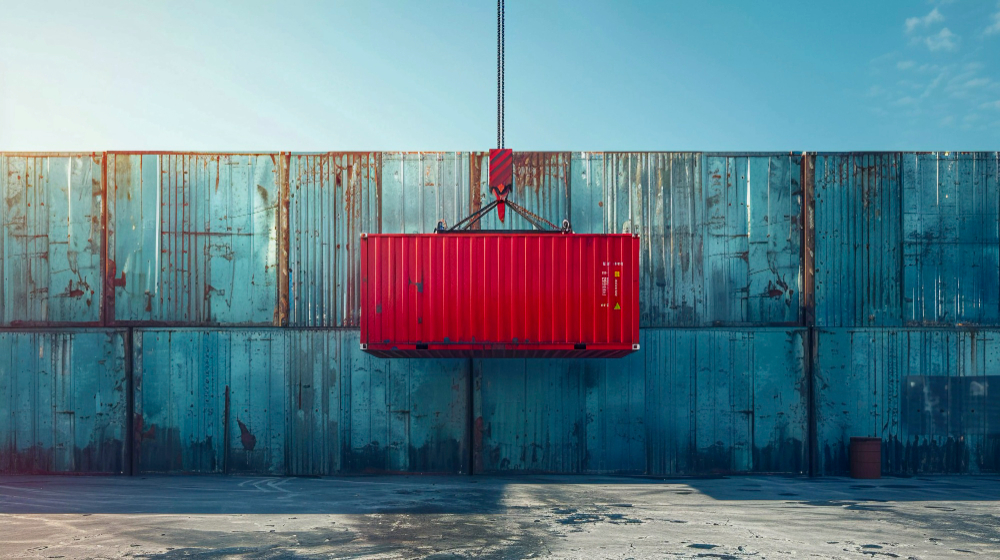In a region like Saudi Arabia, where logistics power trade and industry, the efficiency of loading and securing goods can make or break an operation. Whether you’re moving heavy equipment, construction materials, or consumer goods, the secret to safe and cost-effective transport lies in how well you handle your cargo. Using a reliable cargo grip container in Saudi Arabia can dramatically minimize risks—if used correctly.
Why Loading Technique Matters More Than You Think?
Many logistics professionals underestimate how much improper loading contributes to losses. According to the International Maritime Organization, roughly 65% of cargo damage incidents stem from poor packing and securing methods (IMO.org). Think of a container like a moving puzzle—each piece must fit snugly to prevent costly damage during Saudi Arabia’s long-haul desert drives or cross-border shipments.
Step-by-Step Guide to Proper Cargo Loading
Loading isn’t just about stacking goods; it’s about strategy and foresight. Here’s a professional approach logistics managers in Saudi Arabia swear by:
- Plan Before You Load: Study the cargo’s weight, shape, and fragility. Group similar-weight items together and keep heavier loads at the bottom.
- Distribute Weight Evenly: Uneven weight distribution strains the container’s flooring and affects balance, especially on rugged routes.
- Use Quality Dunnage: Materials like air cushions, corrugated fiberboards, or wooden blocks can fill empty spaces and prevent shifting.
- Secure with Straps and Nets: Use industrial-grade tension straps or cargo nets to keep goods from sliding.
- Inspect Before Sealing: Once loaded, double-check locks, hinges, and seals to ensure stability and security.
Smart Practices for Securing Goods During Transit
Securing cargo is as vital as loading it. Saudi Arabia’s climate—with high heat and occasional sandstorms—can test even the toughest logistics plans. To maintain cargo integrity:
- Choose Anti-Slip Floors: Modern grip containers are built with slip-resistant surfaces to stabilize goods during movement.
- Use Container Liners: These prevent contamination from dust, moisture, or chemical residue.
- Install Load Bars: These create pressure between container walls, locking cargo in place even on uneven roads.
And for added protection at loading docks, consider integrating PE dock bumpers in Saudi Arabia. These shock-absorbing bumpers cushion impacts when containers are loaded or unloaded, reducing both structural damage and downtime.
How Technology Is Changing Cargo Security?
Saudi Arabia’s logistics industry is quickly adopting digital solutions to improve cargo safety. From smart sensors that monitor vibration and temperature to AI-assisted load optimization, technology is redefining safety standards. Many fleet operators are now using tracking software to alert them if cargo shifts mid-transit, allowing for immediate intervention.
Practical Checklist for Every Shipment
Before dispatching any container, run through this simple checklist:
- Verify the container’s load-bearing capacity.
- Inspect for structural integrity—no rust or dents.
- Confirm all goods are labeled, wrapped, and secured.
- Ensure seals and identification numbers are recorded.
- Review local transport compliance and safety regulations.
For additional insights on cargo protection methods, check out How Cargo Grip Containers Prevent Freight Damage while in Transit?.
Real-World Example: Logistics Efficiency in the Gulf
In Jeddah’s busy port, one logistics company reported a 25% reduction in cargo claims after standardizing its use of grip containers and implementing precise load-securing protocols. This improvement wasn’t due to expensive upgrades—it came from staff training, using high-friction flooring, and strict inspection checklists. It’s proof that even simple practices can have measurable results when consistently applied.
FAQs on Loading and Securing Cargo in Grip Containers
1. Why are cargo grip containers preferred for freight in Saudi Arabia?
They’re built with non-slip surfaces and durable materials that withstand Saudi Arabia’s heat and long transport routes, ensuring goods stay secure throughout transit.
2. What materials are best for securing cargo?
High-tensile straps, wooden braces, and anti-slip mats are excellent for preventing movement and shock during transit.
3. How often should containers be inspected?
Before every major shipment. Regular inspection helps detect structural weaknesses, rust, or floor damage that might compromise cargo safety.
4. Can dock equipment improve loading safety?
Absolutely. Using PE dock bumpers and edge protectors can significantly reduce impact damage during loading or unloading operations.
Final Thoughts
Safe cargo transport isn’t just about compliance—it’s about trust and efficiency. By following these best practices and leveraging modern tools like grip containers and dock bumpers, Saudi logistics companies can save costs, protect goods, and maintain client confidence. In a fast-moving supply chain world, every secured shipment is a step toward long-term reliability.





